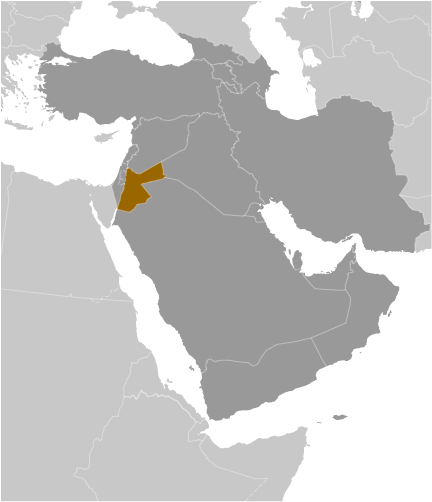
|
|
Advertisements:
MilitaryMilitary branches
Jordanian Armed Forces (JAF): Royal Jordanian Land Force (RJLF), Royal Jordanian Navy, Royal Jordanian Air Force (Al-Quwwat al-Jawwiya al-Malakiya al-Urduniya, RJAF), Special Operations Command (Socom); Public Security Directorate (normally falls under Ministry of Interior, but comes under JAF in wartime or crisis) (2011) Military service age and obligation
17 years of age for voluntary military service; initial service term 2 years, with option to reenlist for 18 years; conscription for males at age 18 was suspended in 1999, but reinstated in July 2007 in order to provide youth training necessary for job market needs; all males under age 37 are required to register; women not subject to conscription, but can volunteer to serve in noncombat military positions in the Royal Jordanian Arab Army Women's Corps and RJAF (2012) Manpower available for military service
Males age 16-49 1,674,260
Females age 16-49 1,611,315 (2010 est.) Manpower fit for military service
Males age 16-49 1,439,192
Females age 16-49 1,384,500 (2010 est.) Manpower reaching militarily significant age annually
Male 73,574
Female 69,420 (2010 est.) Military expenditures World Ranking: 4
8.6% of GDP (2006)
Comments
Add a new comment: |
Advertisement
Members area
Jordan (Amman):
 
GPS points from Jordan (Amman)
|
||||||||

 Following World War I and the dissolution of the Ottoman Empire, the UK received a mandate to govern much of the Middle East. Britain separated out a semi-autonomous region of Transjordan from Palestine in the early 1920s, and the area gained its independence in 1946; it adopted the name of Jordan in 1950. The country's long-time ruler was King HUSSEIN (1953-99). A pragmatic leader, he successfully navigated competing pressures from the major powers (US, USSR, and UK), various Arab states, Israel, and a large internal Palestinian population. Jordan lost the West Bank to Israel in the 1967 war and defeated Palestinian rebels who attempted to overthrow the monarchy in 1970. King HUSSEIN in 1988 permanently relinquished Jordanian claims to the West Bank. In 1989, he reinstituted parliamentary elections and initiated a gradual political liberalization; political parties were legalized in 1992. In 1994, he signed a peace treaty with Israel. King ABDALLAH II, King HUSSEIN's eldest son, assumed the throne following his father's death in February 1999. Since then, he has consolidated his power and implemented some economic and political reforms. Jordan acceded to the World Trade Organization in 2000, and began to participate in the European Free Trade Association in 2001. In 2003, Jordan staunchly supported the Coalition ouster of SADDAM in Iraq and, following the outbreak of insurgent violence in Iraq, absorbed thousands of displaced Iraqis. Municipal elections were held in July 2007 under a system in which 20% of seats in all municipal councils were reserved by quota for women. Parliamentary elections were last held in November 2010 and saw independent pro-government candidates win the vast majority of seats.
Following World War I and the dissolution of the Ottoman Empire, the UK received a mandate to govern much of the Middle East. Britain separated out a semi-autonomous region of Transjordan from Palestine in the early 1920s, and the area gained its independence in 1946; it adopted the name of Jordan in 1950. The country's long-time ruler was King HUSSEIN (1953-99). A pragmatic leader, he successfully navigated competing pressures from the major powers (US, USSR, and UK), various Arab states, Israel, and a large internal Palestinian population. Jordan lost the West Bank to Israel in the 1967 war and defeated Palestinian rebels who attempted to overthrow the monarchy in 1970. King HUSSEIN in 1988 permanently relinquished Jordanian claims to the West Bank. In 1989, he reinstituted parliamentary elections and initiated a gradual political liberalization; political parties were legalized in 1992. In 1994, he signed a peace treaty with Israel. King ABDALLAH II, King HUSSEIN's eldest son, assumed the throne following his father's death in February 1999. Since then, he has consolidated his power and implemented some economic and political reforms. Jordan acceded to the World Trade Organization in 2000, and began to participate in the European Free Trade Association in 2001. In 2003, Jordan staunchly supported the Coalition ouster of SADDAM in Iraq and, following the outbreak of insurgent violence in Iraq, absorbed thousands of displaced Iraqis. Municipal elections were held in July 2007 under a system in which 20% of seats in all municipal councils were reserved by quota for women. Parliamentary elections were last held in November 2010 and saw independent pro-government candidates win the vast majority of seats.